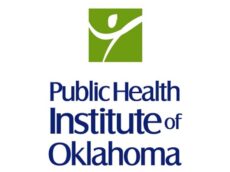
OPIPH Poster:
Using the Pregnancy Risk Assessment Monitoring System to Assess Social Determinants of Health
Authors

Binitha Kunnel MS
Binitha Kunnel is the Senior Biostatistician with the Maternal and Child Health (MCH) Assessment division at the Oklahoma State Department of Health. She serves as the lead statistician for analytic projects involving Vital Records data, Pregnancy Risk Assessment Monitoring System (PRAMS), Oklahoma Toddler Survey, and the Maternal Innovation Grant project. She is also responsible for guiding the State Systems Development Initiative (SSDI) and the MCH data-linking project with Medicaid. As the senior analyst, she is closely involved with MCH data linkage projects, data monitoring for the Title V Block Grant, Title V 5-year Needs Assessment and evaluation of programs within MCH. She has focused her efforts on reducing infant mortality and preterm births.

Ayesha Lampkins MPH
Ayesha Lampkins currently serves as the Project Manager for the Pregnancy Risk Assessment Monitoring System (PRAMS) and The Oklahoma Toddler Survey (TOTS) Projects within the Maternal and Child Health (MCH) Assessment division at the Oklahoma State Department of Health. Her responsibilities include the day-to-day management practices of the PRAMS and TOTS statewide surveillance systems. Ayesha has over 16 years of public health experience in both the government and non-profit sectors. Additionally, she is experienced in grant writing, reviewing, and reporting; budget management; contract monitoring; program evaluation and quality improvement; group facilitation methods; and health facility administration. Ayesha's current work in MCH is focused on reducing infant mortality.

Background: Social determinants of health (SDOH), which includes social factors and the environment where people live have a bigger impact on health than biology, behavior or healthcare (1,2). This is exceptionally significant among the maternal and child population (MCH) as SDOH could affect the life course of both mother and child. This study describes the Pregnancy Risk Assessment Monitoring System (PRAMS) as a tool to measure SDOH for MCH.
Methods: The Center for Disease Control (CDC) developed a database that utilizes information from PRAMS to describe the five Healthy People 2020 categories of Social Determinants: Economic Stability, Education, Social and Community Context, Neighborhood and Built Environment, Health and Health Care. This study presents the SDOH indicators using Oklahoma PRAMS 2016-2019. The prevalence rates were calculated using SAS callable SUDAAN.
Results: Although the prevalence of the indicators varied, the disparities were consistent across the categories of SDOH. Considering education, one in four Oklahoma mothers, 18 years or over, had a Bachelor’s degree or more. This rate was highest among non-Hispanic white mothers (33%). Overall, 58% of mothers reported being married and among non-Hispanic black mothers, this rate was barely 28%. The disparities in economic stability described by the federal poverty level (FPL) was quite evident. Non-Hispanic black mothers were below 100% of the federal poverty level at double the rate of non-Hispanic white mothers. Overall, one in five mothers reported they had no health insurance prior to pregnancy, while this rate was one in two among Hispanic mothers. Accessing healthcare prior to pregnancy or for prenatal care (PNC) and postpartum care all showed a trend dependent on access to health insurance. However, in spite of having low health insurance coverage, Hispanic mothers accessed PNC at higher rates. PRAMS showed high rates of social support for mothers, the declining survey response combined with the characteristics of mothers who are more likely to respond may have influenced the high rates.
Conclusions: This study showed that indicators associated with the five Healthy People 2020 Social Determinants categories differ among demographic groups for new mothers in Oklahoma. These disparities have implications across the life course for the maternal and child population. Addressing SDOH is beneficial for improving individual, family, community, and population health and well-being. Applying an SDOH lens to public health also provides a framework for collaborations and systems changes needed to achieve outcomes that are more equitable.
- Booske BC, Athens JK, Kindig DA, Park H, Remington PL. County health rankings working paper. Different perspectives for assigning weights to determinants of health. Accessed January 14, 2019.
- County Health Rankings and Roadmaps. Explore health rankings. . Accessed January 14, 2019.
QUESTIONS/COMMENTS FOR THE AUTHORS
We look forward to hearing from you. Please send an email by clicking the button below.
Email